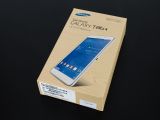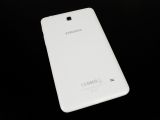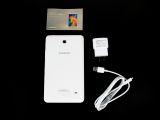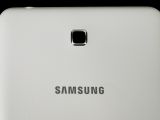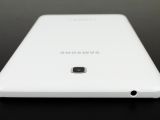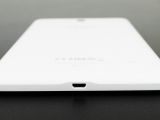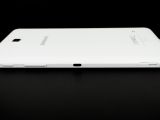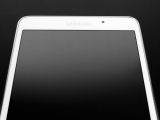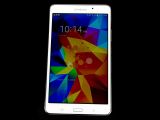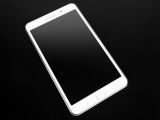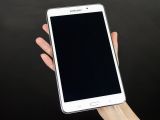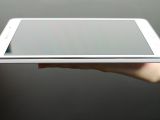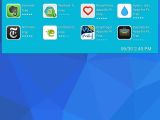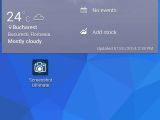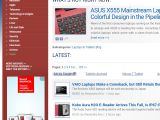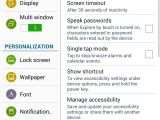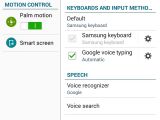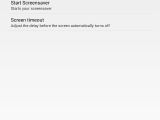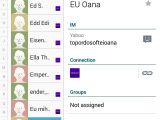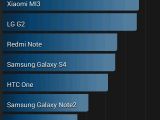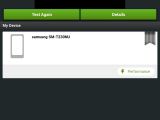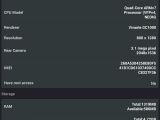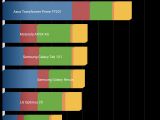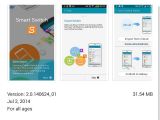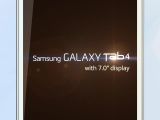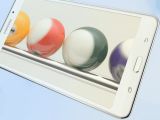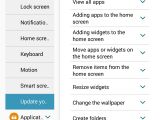Samsung has its eyes set on the tablet market and has developed an elaborate plan in its quest to conquer it. The Korean tech giant follows a certain train of thought. It believes that in order to appeal to every single one of us, it has to offer products especially tailored for every consumer sector.
Samsung tablets for those on the budget? Check. High-end tablets for professionals? Also check. What about media tablets with amazing displays? Double check.
Since most Android tablets driving sales today are models with low specs and decent price tags, Samsung has done well not to ignore this particular sector. A few months ago, the tech giant launched the Galaxy Tab 3 Lite, which came with mid-range specs, but sold for what was thought to be quite a high-price.
A few months later, Samsung pushed out the next-gen Tab4 lineup, which succeeded the pretty popular Tab 3 bunch. The Korean giant offered three models in the form of 7-inch, 8-inch and 10.1-inch flavors.
We’re here to talk about the 7-inch model - SM-T230NU, which we had the opportunity to play with for a little while. The tablet sells for the relatively decent $199 / €146, and considering that, for the same amount of money you can get the Android Wear Samsung Gear Live or Tizen-powered Gear Neo, it doesn't sound bad at all.
Design
The Galaxy Tab 4 7.0 looks like a pretty standard Samsung device. Like many products coming from Sammy’s garden, plastic is the material of choice with a binding reminiscent of metal around the outer edges.
But the tab feels quite sturdy and well built and can be easily held with one hand, even by those who have smaller hands. After all, that’s the point of 7-inchers, offering flexibility. If you have big enough pockets, you can easily slip it in one of them.
The rugged texture on the back allows users to grab it firmly in position and you won’t notice any shaking or rattling of the physical buttons either.The slate measures 7.36 x 4.25 x 0.35 inches / 186.9 x 107.9 x 9 mm and weighs just 276 g / 0.6 lbs. This translates into the tablet being a tad smaller than the Nexus 7 (2013) and its predecessor the Galaxy Tab 3 7.0.
On the right side of the slate, you’ll notice the volume and power buttons located near the top, the IR port lives in the center, while the SD card exists near the button covered by a plastic flap.
On the top there’s a 3.5mm headset jack, while on the bottom there’s the USB 2.0 ports. The buttons are easy to reach and push even while you’re holding the tablet with only one hand.Looking directly at the screen, you’ll notice the 1.3MP front-facing camera on top. The back houses the quite-average 3.1MP fixed-focus camera and a speaker.
style="color: #aa3333">Display
The Galaxy Tab 4 7.0 arrives with a TFT LCD display boasting the average resolution of 1280 x 800 pixels. Surely, this is not a bad display, but we were hoping Samsung might bump things up a little more compared to its predecessor, which arrived with a 1024 x 600 pixel resolution.
If you’re not a pixel snob, you’ll be able to work with this screen. Colors and viewing angles are decent and the display can become quite luminous when the brightness levels are turned up.
However, we should point out that the display density is quite low, being set at 189ppi. The higher the ppi, the more detail you’ll find within an image. This aspect might become evident when you’re trying to read text or perform other activities where a certain amount of clarity is deemed.
The Galaxy Tab 4 7.0 is certainly no match for the Galaxy TabPRO 8.4 and its amazing 359 ppi, but you’ll still be able to get a pretty decent experience overall.
Since the Galaxy Tab4 7.0 is aimed at budget consumers, who will probably use the tablet for watching video and playing a game, the screen will perform just fine.Sure, the slate won’t be capable of delivering insanely detailed HD video, but you’ll be able to watch the latest True Blood episode and understand what’s going on (we jest, it’s better than that).
style="color: #aa3333">Power and Performance
The tablet draws life from a Qualcomm Snapdragon 400 clocked at 1.2GHZ fitted with an atypical 1.5GB of RAM. We had the 8GB of internal storage version on our hands, but half of the space was filled with Samsung’s own stuff. Therefore, if your goal is to install apps and games from the Google Play Store, it would be more beneficial if you got the 16GB model instead.
The Tab 4 7.0 is far from being a speed demon. It has a hefty delay time even as you swipe over the lock screen, and if you use it for a prolonged period of time, it will heat up and succumb to sluggishness.
Some apps will sometime fail to launch and Samsung’s TouchWiz proprietary UI doesn't animate icons once you tap on them. So when you try to open an app and the tablet fails to comply, you won’t have the slightest idea whether the command has been registered in its system.
Anyway, the benchmark results also prove that the tablet doesn't boast a stellar performance, but a mid-range one. For example, in Quadrant, the Tab4 7.0 scored 4112 points, placing it right above the ASUS Transformer Prime TF201, a device launched back in 2011.
The tablet’s performance is also shown to be better than that of the Samsung Galaxy Tab 10.1, which was also rolled out in 2011.In AnTuTu, our tablet scored 13,837 points, placing it at the bottom of the top. Products like the Samsung Galaxy Note 2, HTC one and Samsung Galaxy S4 all beat the small slate.
style="color: #aa3333">Interface and Software
Like with most Galaxy phones or tablets, this little device also runs on Samsung’s proprietary TouchWiz interface. So if you’re not a fan of that, you shouldn't be getting the Tab 4 7.0.
The tablet has been designed around the TouchWiz experience, so if you’re planning to flash custom ROMs and the like, you better go and look for a Nexus tablet instead.
The TouchWiz interface isn't the same as the latest Magazine UX we have seen Samsung bundle its latest Galaxy NotePRO / TabPRO and Galaxy Tab S devices, but it still is pretty colorful and vibrant, nevertheless.
Most of the Samsung apps you're accustomed with are to be found on board, and so is the Samsung Appstore, for which you have to register in order to get access to.
The default apps include Contacts, My Files, S Planner, Memo, Browser, E-mail, Music, Video, Alarm and S-Voice.On top of that, you'll be able to take advantage of Kids Mode, an app that’s being offered on Samsung’s latest tablets, the Galaxy Tab S. The system allows you to turn this little tablet into a child-friendly slate within minutes.
From the interface, you'll be able to restrict access to certain applications and media content stored on the tablet. Once you set up the app, you’ll be able to switch between Kids Mode and Parent Mode quite easily.
Of course, you’ll get some Google bloatware along for the ride, in the form of Google Drive and Chrome. Whether you like them or not, they are still there for you to take advantage of, or to frown upon. The operating system running out of the box is Android 4.4 KitKat, the latest version in the bunch. That’s certainly a plus and you won’t have to stay up at night wondering when the next update hits your device.style="color: rgb(255,102,0)">Internet and Connectivity
We had the Wi-Fi-only model of the tablet for us to review. We tried connecting the device on two different Wi-Fi networks, and on our first try, this was achieved without a problem. However, on our second try, the connection would drop and reappear again, before dropping to the ground once more. It was quite annoying, but after a restart, we didn't see any issue whatsoever.
Other than that, browsing online is achieved rather smoothly and we didn't get any "fatal" errors.
Multimedia The tablet arrives with a built-in Gallery app, which brings about some neat features. For example, you can edit and send photographs as postcards, and you even get to plaster your own writing on top of them.
Furthermore, you also get Samsung’s Video Player and the Music app. Sadly, the lone speaker located on the back doesn’t really deliver good sound quality, and in the noise environment of a working office you might find it difficult to discern tunes or hear what someone is saying.
The tablet can play 1080p video encoded in DivX (.avi), H.264 (.mp4), MPEG-4 (.mp4) and Xvid (avi).
Battery
One thing you won’t see us complaining about is the battery life of this device. We got to use the slate uninterruptedly for 7 hours, and there was probably still some juice left in it. So, the Galaxy Tab 4 7.0 will prove a worthy travel companion too.
The Good
The Bad
style="color: rgb(153,51,102)">Overall Impressions
Take into account that LG has recently rolled out a 7-inch tablet with similar specs. The G Pad arrives with an IPS display and offers 1280 x 800 pixels res and draws life from 1.2GHz quad-core processor (in all likelihood Snapdragon).
Basically, the specs list is identical to that of the Samsung Galaxy Tab 4, but the LG G Pad 7.0 can be yours for the price of $149.99 / €110. So, unless you have some tight brand affiliation with Samsung, you’ll be able to spare a hefty $50 / €37 by purchasing the LG model.
Or maybe you crave the Samsung bloatware the tablet comes with. It’s all a matter of personal preference here.
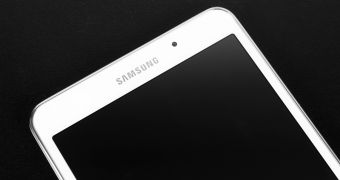
 14 DAY TRIAL //
14 DAY TRIAL // 
